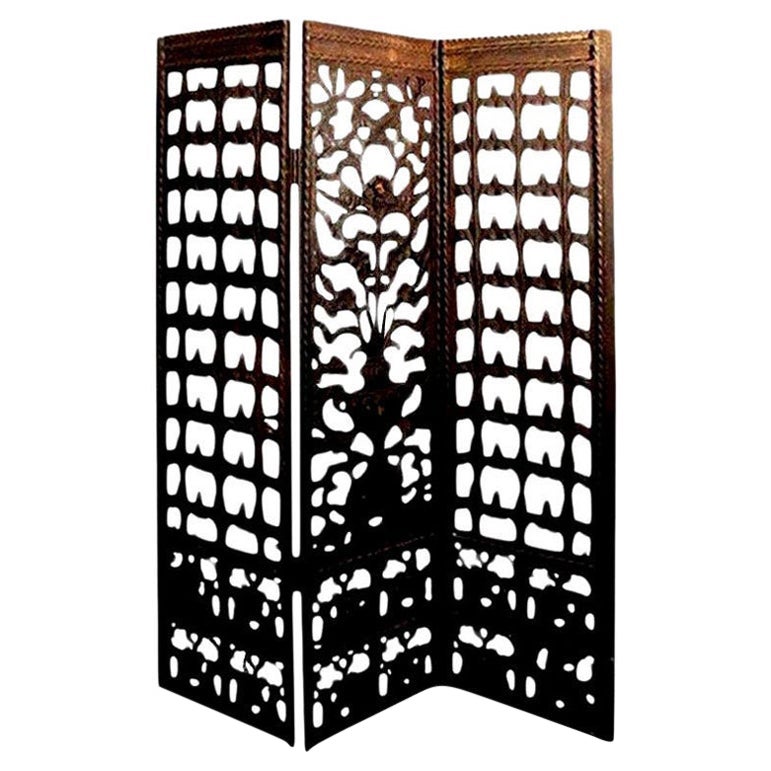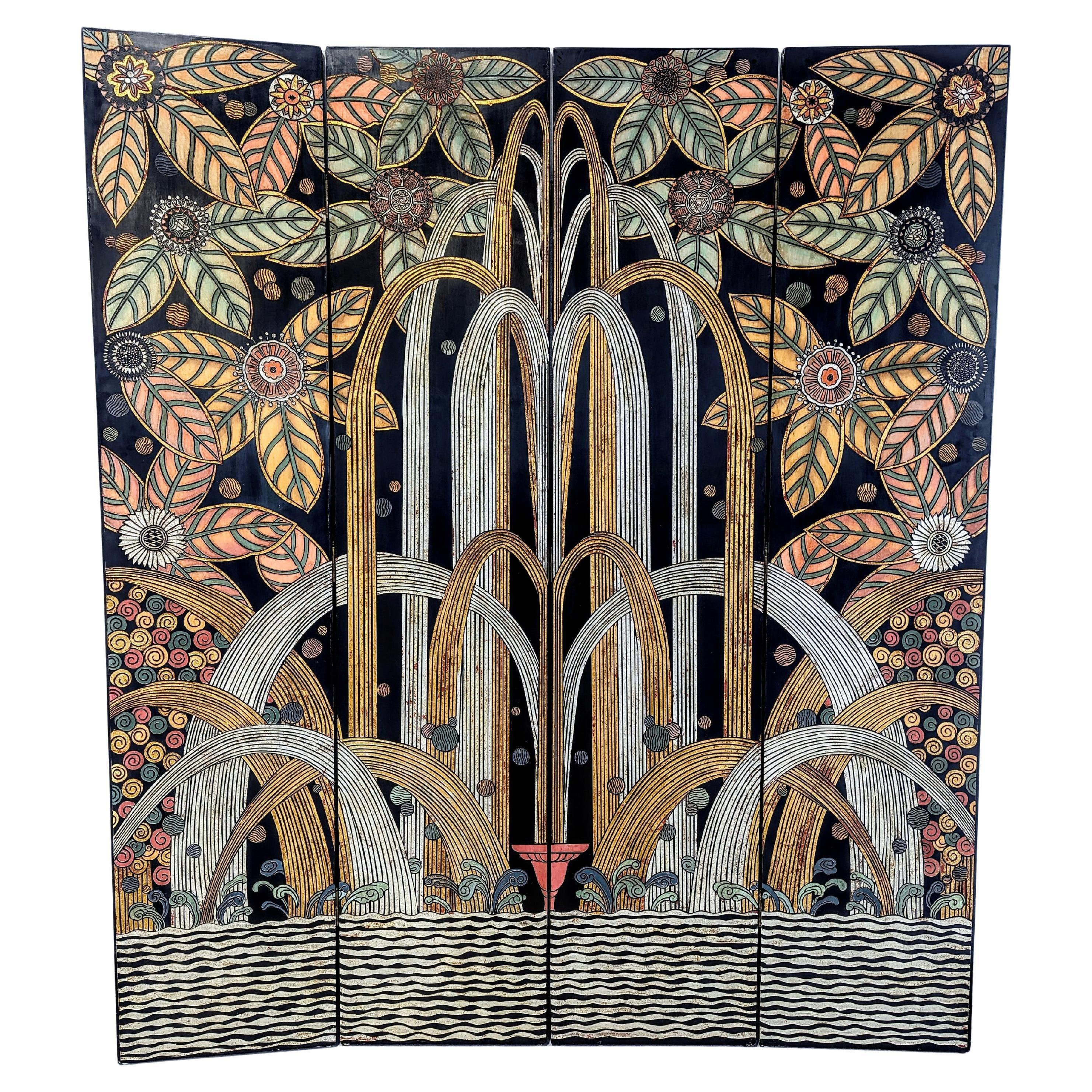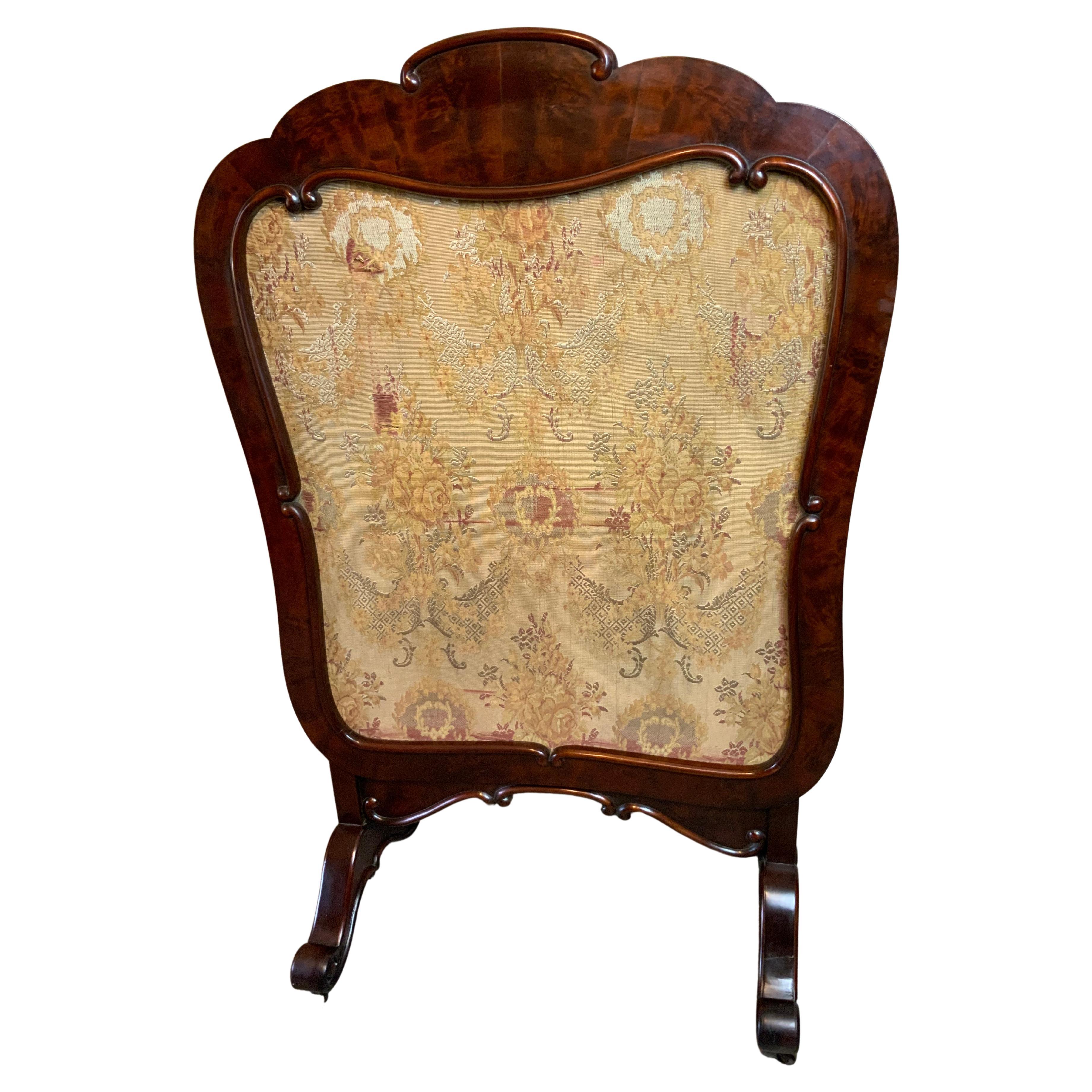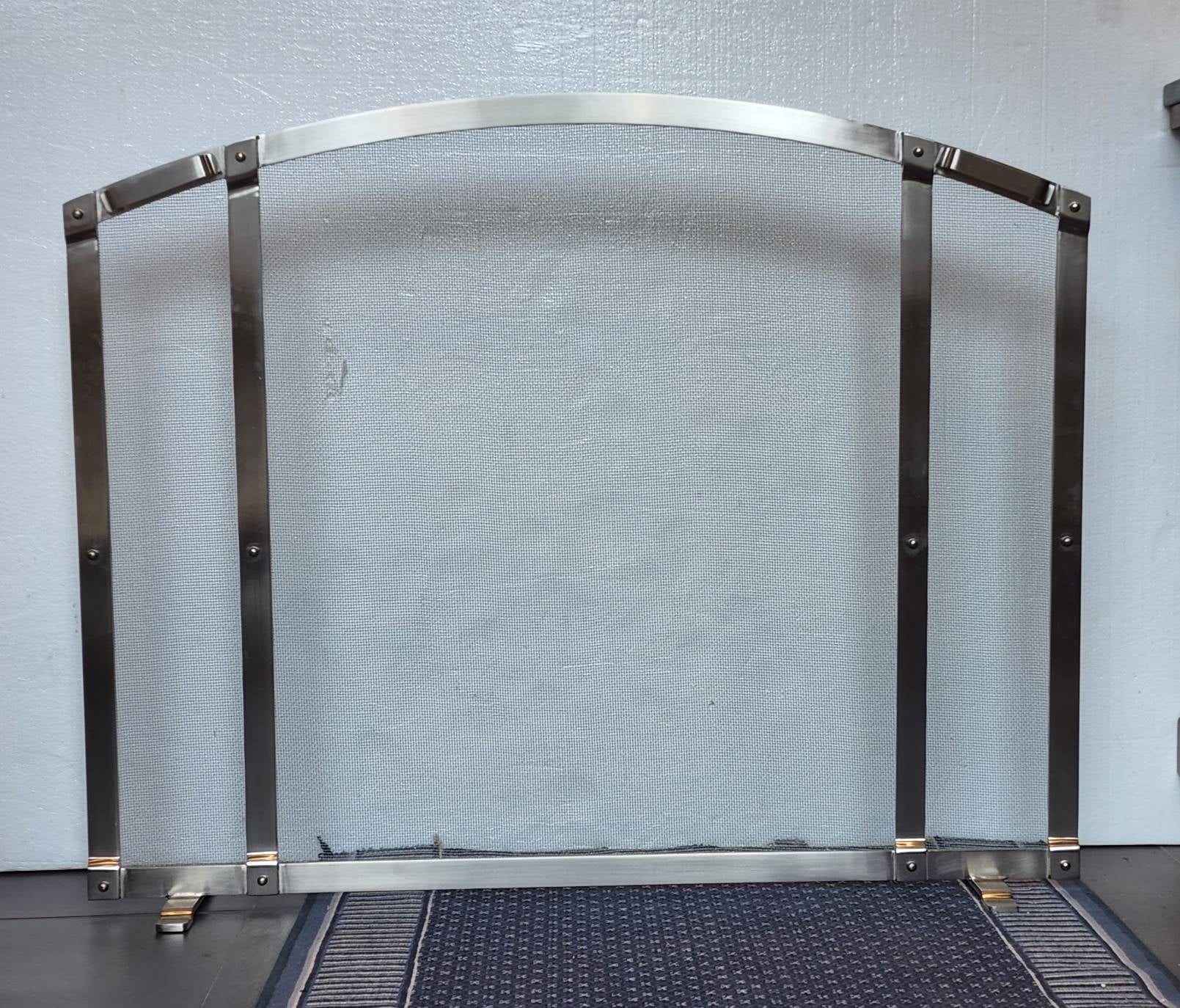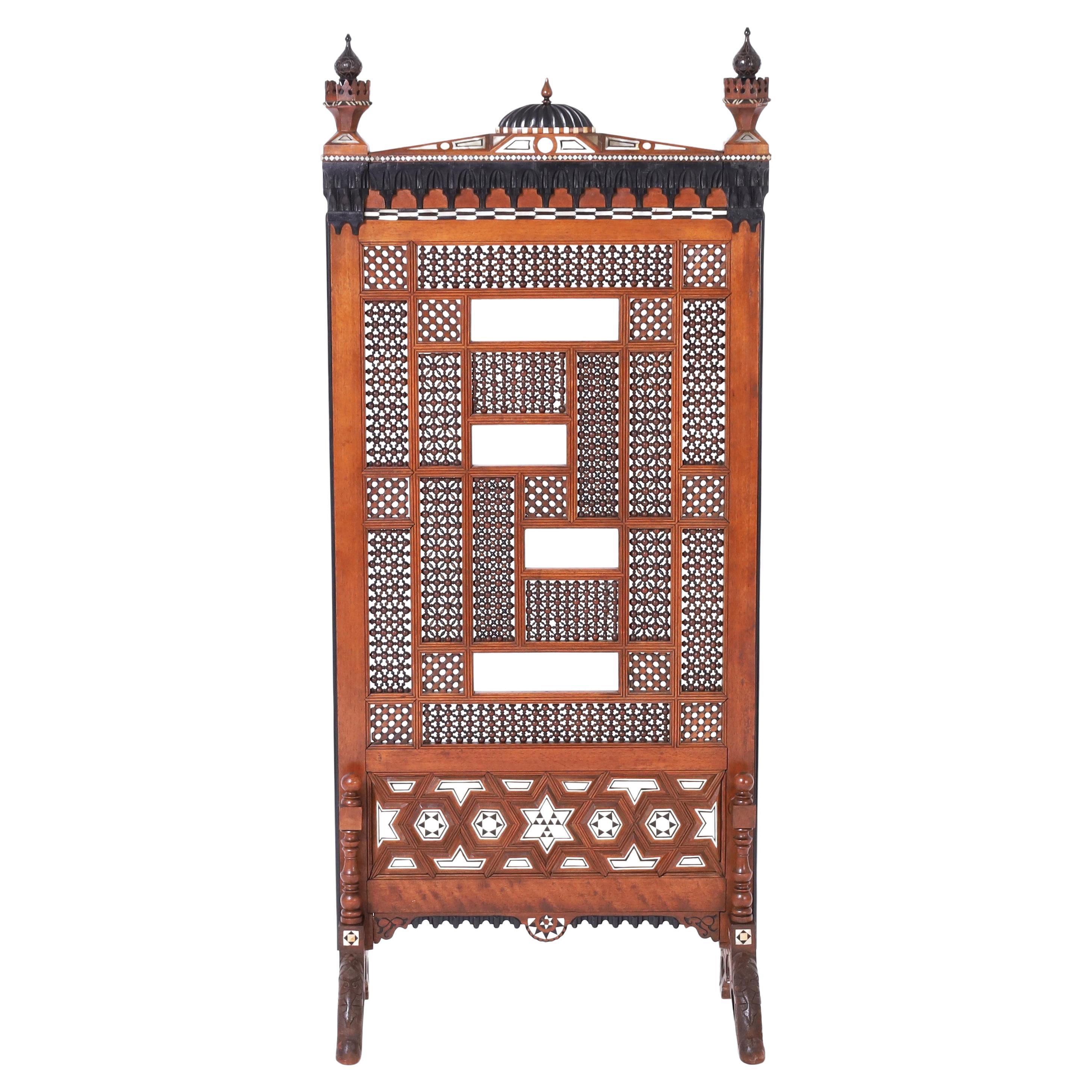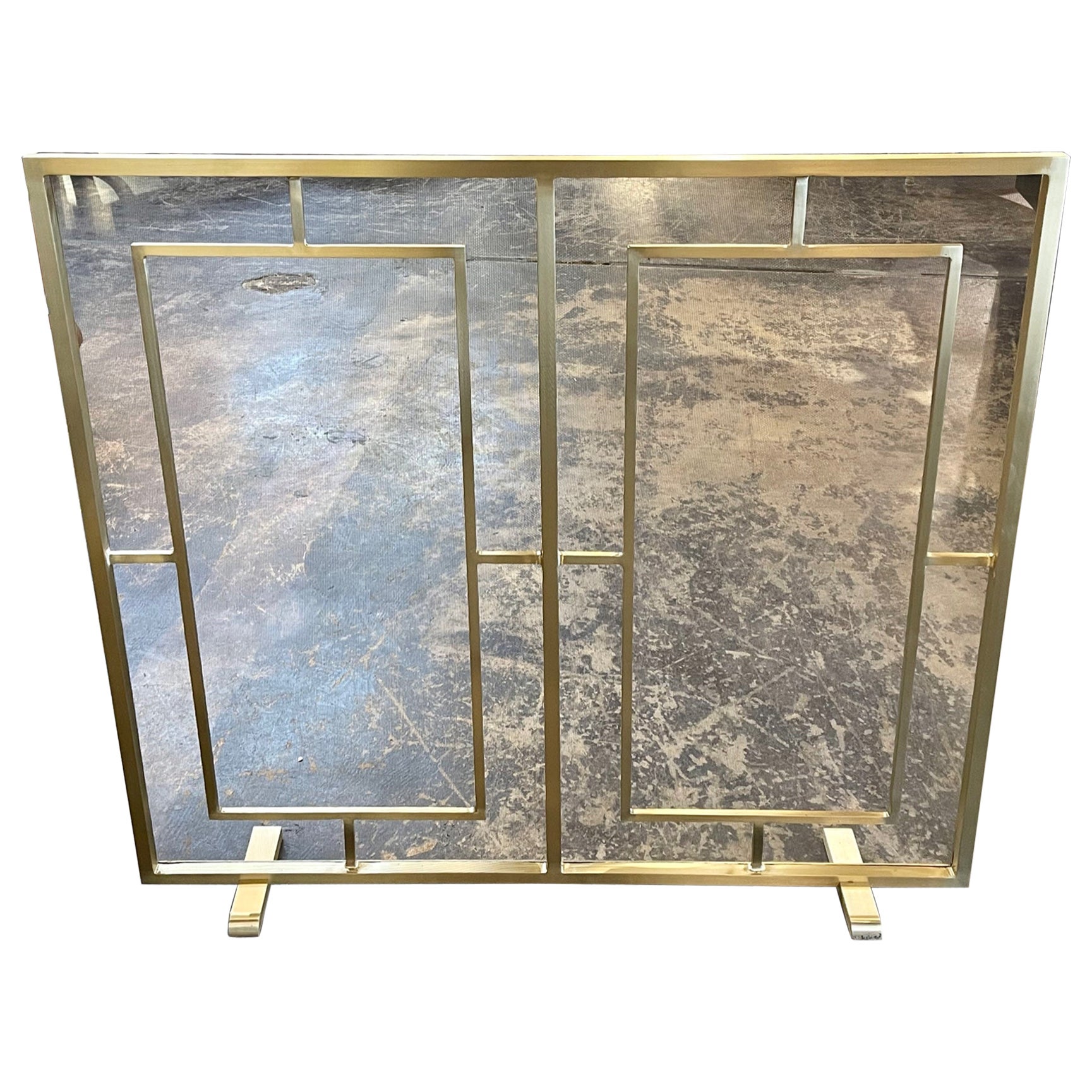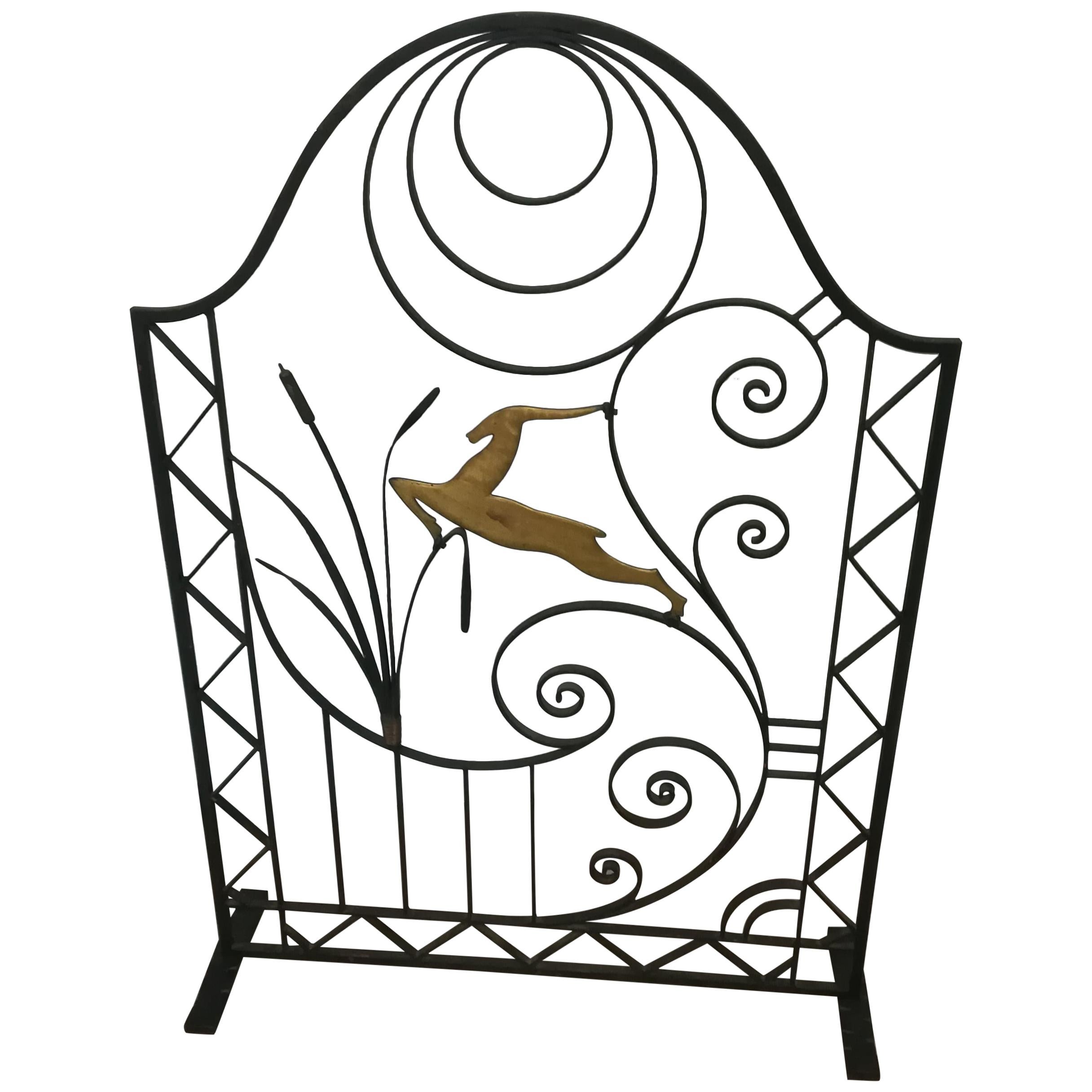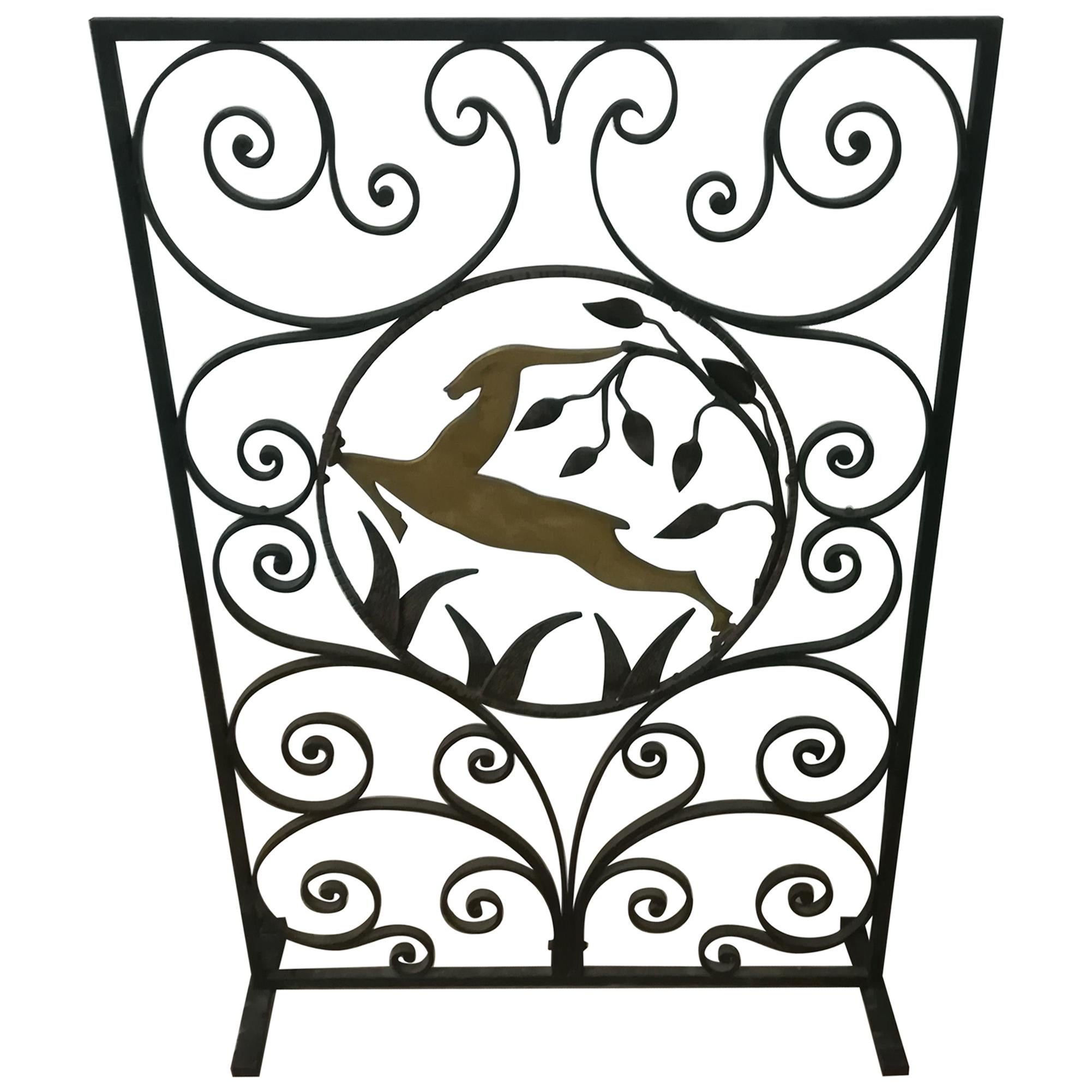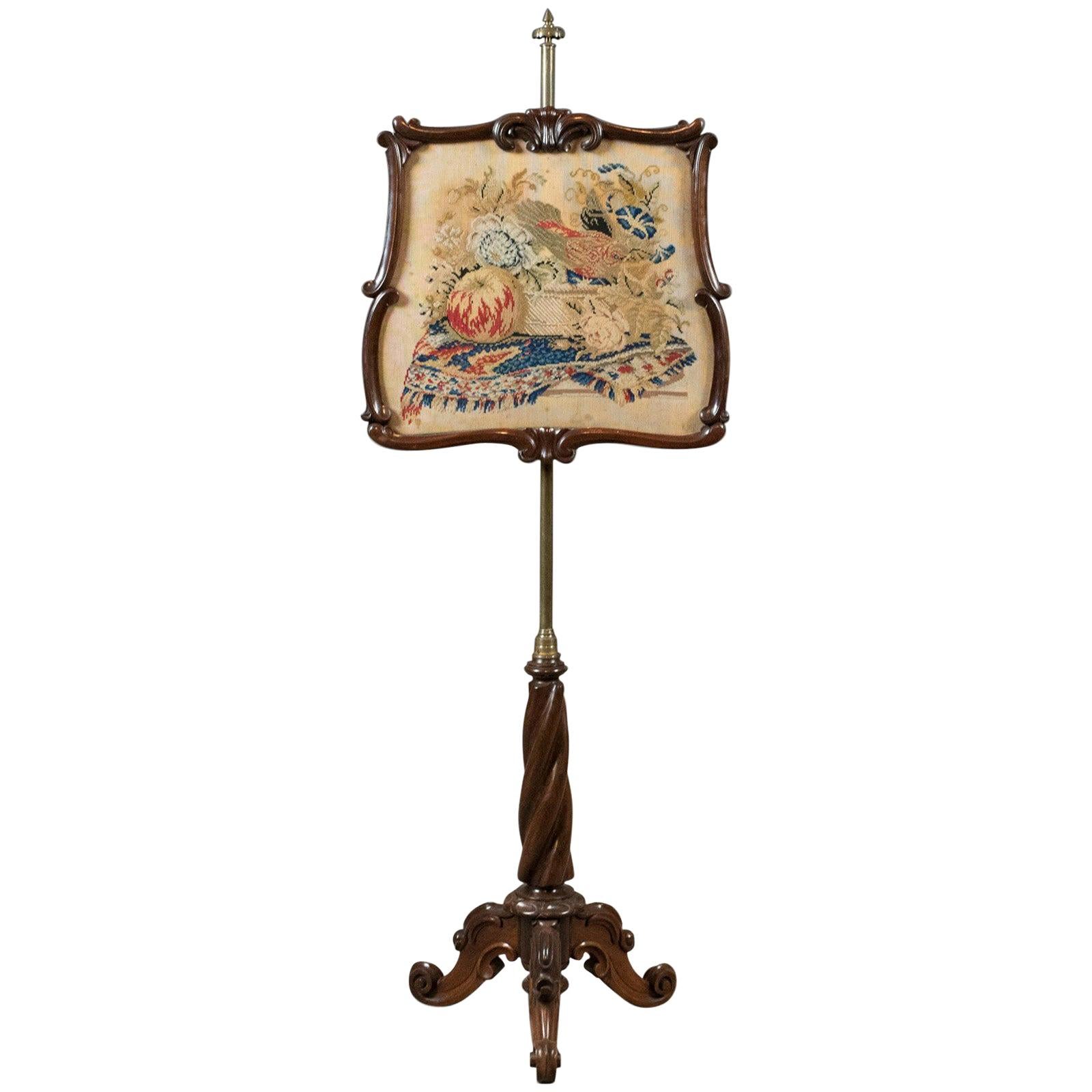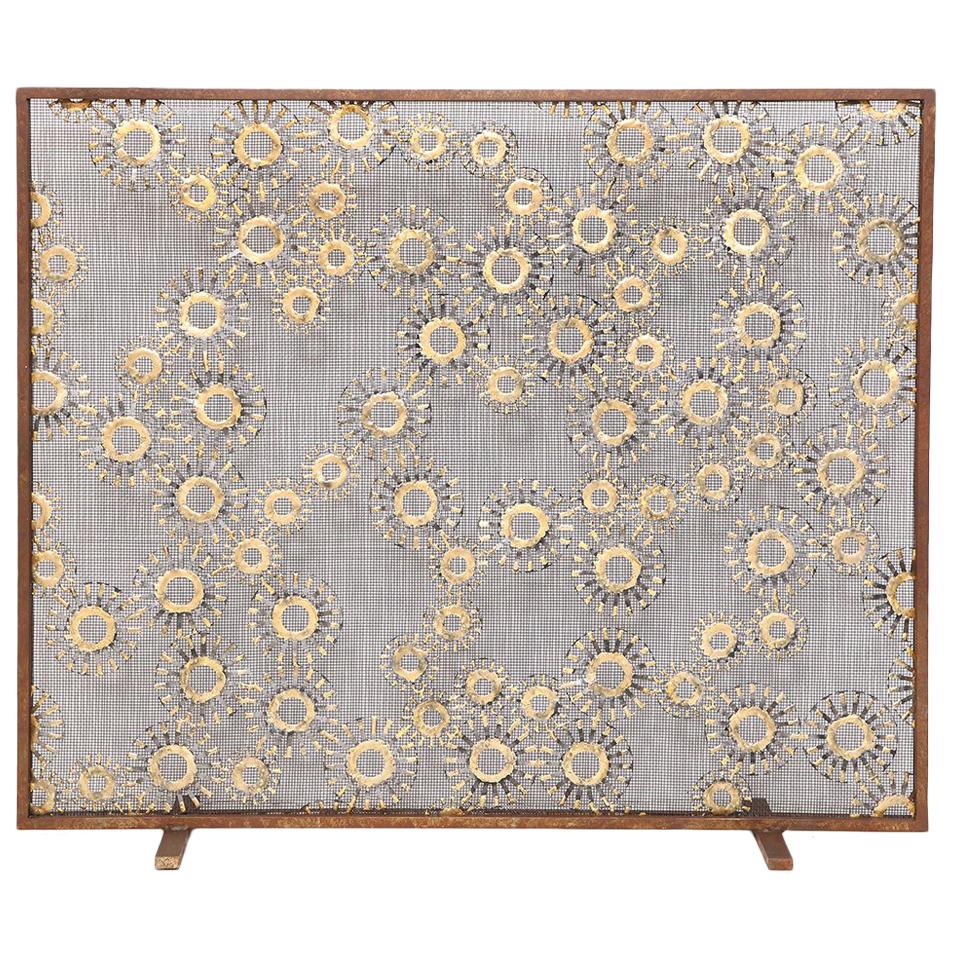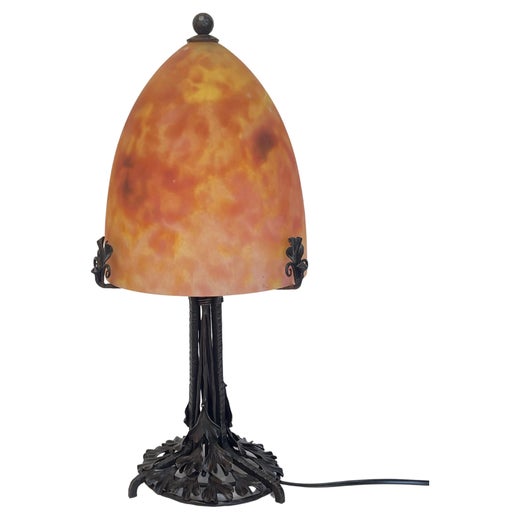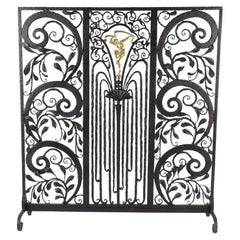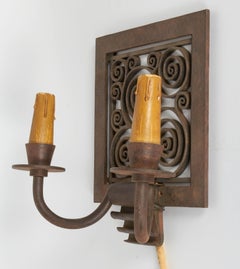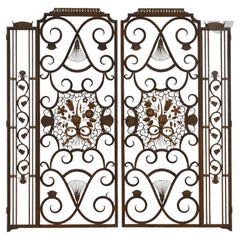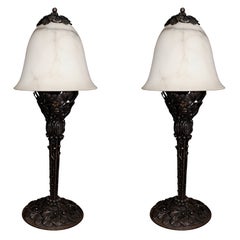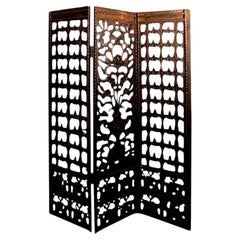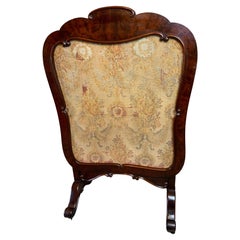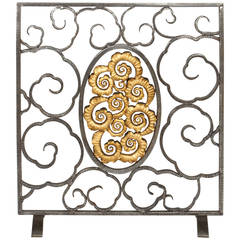
Edgar Brandt Fire Screen
View Similar Items
Edgar Brandt Fire Screen
About the Item
- Creator:Edgar Brandt (Maker)
- Dimensions:Height: 32.25 in (81.92 cm)Width: 29.5 in (74.93 cm)Depth: 9 in (22.86 cm)
- Style:Art Deco (Of the Period)
- Materials and Techniques:Iron,Hammered
- Place of Origin:
- Period:
- Date of Manufacture:circa 1930
- Condition:
- Seller Location:Bridgewater, CT
- Reference Number:1stDibs: f80151507312800473fs
Edgar Brandt
French metalworker Edgar Brandt refused to settle into a single way of doing things and he constantly experimented with different techniques, mediums and styles. From his earliest dive into Art Nouveau to his transition to Art Deco, Brandt brought his craft to bear on pieces ranging from architectural elements, such as doors, to furnishings like console tables and wall sconces — each object rich with thoughtful detail.
When he was 13, Brandt was enrolled by his parents in the prestigious École Nationale Professionnelle de Vierzon boarding and trade school. The school placed him in the ironworking program, where he learned traditional forging methods. He served two years in the military after graduating and subsequently opened a small shop to practice his craft.
In his cozy atelier in Paris, Brandt designed small metal objects like crosses, rings and pendants. He methodically created each piece and slowly worked his way up to larger projects. Inspired by the Art Nouveau furnishings of Louis Majorelle, fashioned from wood and wrought iron, Brandt added furniture design to his skillset.
In 1914, the French military called on Brandt to serve in World War I. During this time, he designed weapons and shell casings that were widely copied and used in both world wars.
After peace temporarily took shape in Europe, Brandt worked tirelessly to design and produce a wide variety of metal pieces. Every year, he showed his work at the Salon d’Automne. In 1919, he expanded his enterprise by building a new workshop, where he employed 100-plus workers. International demand for his work prompted Brandt to expand further and open a factory in the Parisian suburb of Chatillon-sous-Bagneux. There, he had more than 3,000 employees.
In 1936, the French government nationalized his company, and they began to produce armaments under Brandt's name. The onset of World War II led Brandt and his family to flee to Switzerland, where they stayed until the fighting was over. When he finally returned to France, Brandt didn’t reopen his studio. He chose, instead, to work on small-scale projects until his death in 1960.
Brandt received many high-profile commissions and participated in several important collaborations. He co-created some of France's most notable monuments, including the French Tomb of the Unknown Soldier at the Arc de Triomphe — completed in 1921. He received the title Knight of the Legion of Honor and the Medal of Honor for Applied Art from the French Society of Artists.
On 1stDibs, find antique Edgar Brandt lighting, tables and decorative objects.
More From This Seller
View AllLate 20th Century French Art Deco Fireplace Tools and Chimney Pots
Iron
Vintage 1930s French Art Deco Wall Lights and Sconces
Iron
Vintage 1920s French Art Deco Doors and Gates
Wrought Iron
Vintage 1930s French Art Deco Table Lamps
Alabaster, Wrought Iron
Vintage 1920s French Art Deco Wall Lights and Sconces
Iron
Vintage 1920s French Art Deco Wall Lights and Sconces
Iron
You May Also Like
20th Century Unknown Baroque Screens and Room Dividers
Wrought Iron
20th Century Screens and Room Dividers
Lacquer
Antique Mid-19th Century English George III Screens and Room Dividers
Mahogany
Late 20th Century American Screens and Room Dividers
Sheet Metal
Early 20th Century Moroccan Moorish Screens and Room Dividers
Bone, Mother-of-Pearl, Ebony, Mahogany
2010s Screens and Room Dividers
Brass
